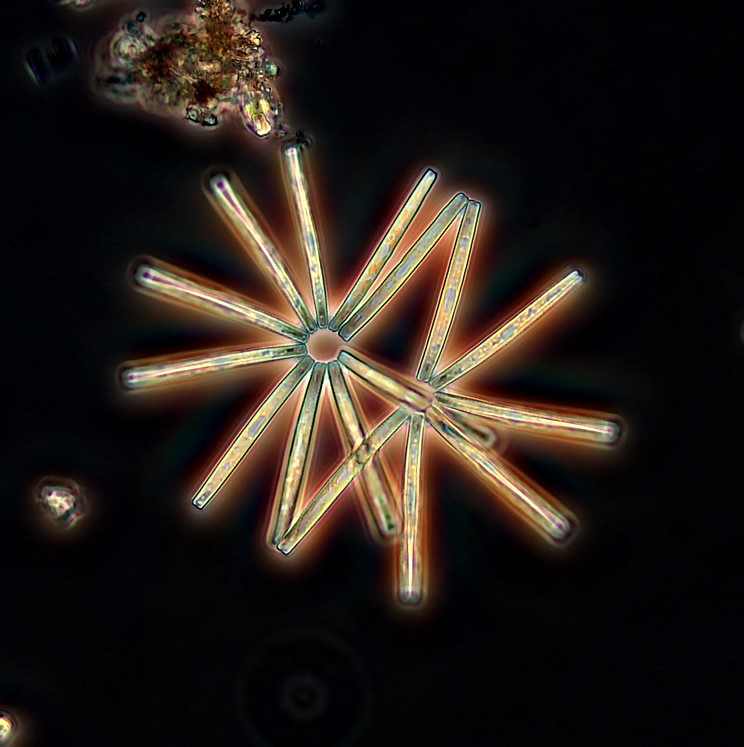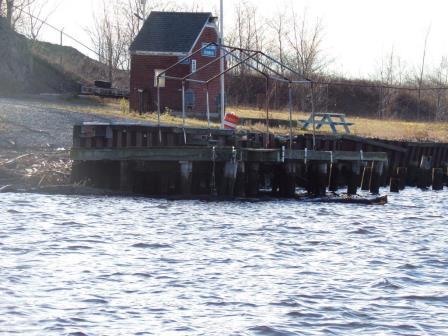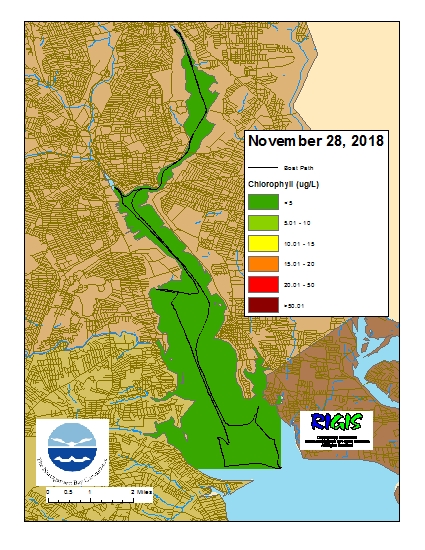Historical News
Benthic Video Blog
Phytoplankton Sampling
Phytoplankton samples were collected at Bullock's Reach on November 7, 2018 and analyzed in the laboratory shortly after collection. It was a sunny day on Narragansett Bay. Sondes data revealed the surface water temperature was 12.55oC, salinity was 16.00 psu, and chlorophyll a was 1.6 ug/L. The plankton tow net sample was filterable with a 20 micron mesh. The filtrate was golden dark brown with a short filter time. Jellyfish were noticed in the sample. The tow net sample was analyzed qualitatively for microorganisms using 100x phase contrast microscopy. The whole water sample was analyzed quantitatively under 200x phase contrast microscopy. A Hensen Stempel pipette was used to accurately deliver 1ml of sample to a Sedge-wick Rafter chamber. This analysis revealed a total of 56,000 cells per Liter. The most predominant phytoplankton was the pennate diatoms at 6,000 cells/L. The flagellates were found at 52,000 cells/L and other representative genera include Prorocentrum spp. and Odontella spp.
200x phase contrast micrograph of Thalassionema spp.

R/V Monitor's Blog
On Wednesday, November 28th, the crew of the R/V Monitor was out on the upper Bay collecting bacteria samples, taking Secchi Disk and Par sensor water clarity measurements, conducting water column profiles using the Seabird instrument, and conducting real-time surface mapping of water quality parameters, including dissolved oxygen, chlorophyll, water temperature, salinity, and pH, all in an effort to document water quality improvements associated with NBC construction projects. Sara captained the boat while monitoring professionals Fern and Mike collected the samples and data. It was a cool day with winds out of the south, making the water choppy. Below is a photo taken this day of Phillipsdale landing in the Seekonk River, where NBC's fixed site monitoring station is located.

Bacteria Sampling
The fecal coliform geometric mean increased from the previous sampling to 482 MPN/100 mL. Fecal coliform concentrations were higher in the Providence River (geometric mean: 593 MPN/100 mL) than in the Seekonk River (geometric mean: 310 MPN/100 mL). The maximum fecal coliform concentration of 2300 MPN/100 mL was measured in the Providence River at Gaspee Point. The greatest fecal coliform value in the Seekonk River, 930 MPN/100 mL, occurred at the Narragansett Boating Center and in one of the Phillipsdale Landing samples. Geometric mean results indicate both rivers exceeded primary contact and shellfishing standards.
The overall enterococci geometric mean was 347 MPN/100 mL. Concentrations ranged from approximately 252 MPN/100 mL at Phillipsdale Landing (geometric mean of two duplicates) to 703 MPN/100 mL at Point Street Bridge. The geometric mean of all results exceeded the state primary contact standard.
Please note: the results of NBC's fecal coliform and enterococci monitoring are for informational/research purposes only and are not intended to suggest official state compliance with bathing or shellfishing standards.
Surface Mapping
Data was collected on November 28, 2018 while the R/V Monitor was underway collecting bacteria samples and performing vertical profiles in the Providence and Seekonk River estuaries. The chlorophyll concentrations were low in areas surveyed. From north to south, average chlorophyll concentrations were as follows: Seekonk River (1.98 µg/l), Upper Providence River (1.76 µg/l), Edgewood Shoals area (1.29 µg/l), Pawtuxet River area (1.34 µg/l), and the Lower Providence River (1.11 µg/l). Overall, chlorophyll ranged between non-detectable and 2.80 µg/l with an overall average of 1.61 µg/l. The chlorophyll data from this date is presented in the map below:




